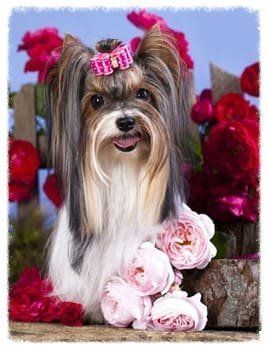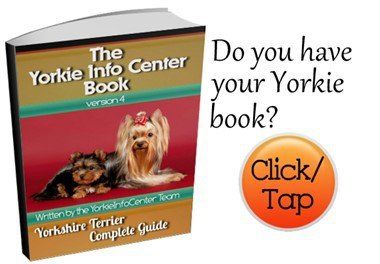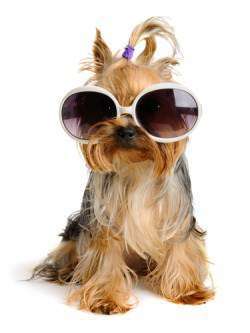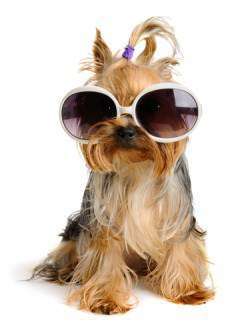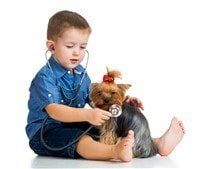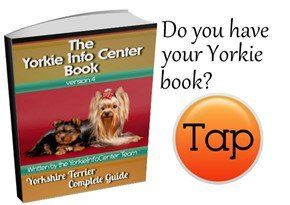The Yorkshire Terrier Information Center
The Yorkshire Terrier: A Wonderful Canine Family Member
Welcome to the enchanting world of the Yorkshire Terrier, a beloved companion with an interesting past, from its beginnings in England as a diligent mill dog and adept 'ratter' to becoming a cherished companion of Victorian royalty. Recognized by the American Kennel Club in 1885, the Yorkie captivates with its vibrant energy, expressive nature and friendly demeanor.
This site is dedicated to offering essential care tips and information to help you embrace the joy and companionship of owning a Yorkshire Terrier. Whether you're new to the world of Yorkies or a long-time enthusiast, you will find helpful advice regarding this breed's unique characteristics and needs. Join our community for a wealth of information designed to promote the well-being and happiness of all Yorkshire Terriers.
- Receive updates when we add pages of information to the site
- Suggest a topic for us to write about
- Be part of events like owner polls and photo call-outs
- Submit photos of your Yorkshire Terrier
- Receive a free, fun & helpful Welcome Booklet
New Right Now:
Big Solutions for Tiny Yorkies - Yorkies may be small, but their needs are anything but. From sensitive paws to quirky personalities and size-related health concerns, these smart picks can help optimize your sweetie's happiness, comfort, and safety.
Yorkie Care Products That Work in 5 Minutes or Less - Short on time but still want your Yorkie looking fresh and fabulous? These quick-care essentials tackle big needs in just minutes; no full spa day required. See these speedy solutions help your little one stay clean, comfy, and camera-ready anytime.
The Best Treats for Yorkies with Sensitive Stomachs - If your Yorkshire Terrier has a tummy that’s quick to rumble, finding the right treat can feel like a guessing game. Thankfully, there are some gentle goodies that deliver fantastic, lip-smacking flavor.
Recently Updated:
Yorkshire Terrier Allergy Information - This article has been recently updated for you. If your Yorkie has itchy skin, watery eyes, or any signs that you think may be allergies, help is here.
How to House Train a Yorkie - Newly updated - Our complete guide to housebreaking your Yorkshire Terrier now includes clearer step-by-step instructions and expert tips. If you want faster progress and fewer messes, you'll find this super-helpful.
More Articles:
Yorkshire Terrier Outdoor Care Guide - Essential guidance on safely introducing your Yorkie to the great outdoors, safeguarding a Yorkie in your yard and against predators, and managing harsh weather. A must-read for both new and experienced Yorkie pet parents.
Yorkshire Terrier Do's and Don'ts - A helpful list of the most important dos and most vital don'ts. It's always a good idea to reassess things; how many are you following?
Yorkshire Terrier Hair Loss Causes and Treatments - A full guide to underlying triggers and all treatment options, including home remedies.
Yorkie Color
- Black & Gold (S 234)
- Black & Tan (S 018)
- Blue & Gold (S 041)
- Blue & Tan (S 044)
Stats of the Yorkshire Terrier
Points of Interest
- The Yorkie was originally a working class family's dog. Then, during the Victorian Era, this breed became popular among royalty. This change made the Yorkie a very sought after dog breed and those who owned one were admired.
- 2 purebred Yorkshire Terriers, both with a genetic recessive genes, mated to produce a white spotted Yorkie. This, in 1984, created a new breed known as the Biewer.
- Although it is said that the Yorkie used to originally be used as "rat catchers" long ago, there is evidence that this breed was also used for hunting, especially for small animals that would hide in tiny dens. Because animals in dens that are cornered often fought back brutally, this gave the Yorkshire Terrier the characteristic of having great courage and valor.
- This breed is considered to be above average in regard to intelligence.
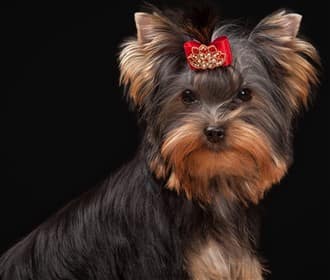
Grooming Your Yorkie
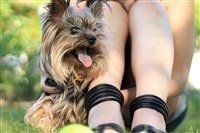
Allergies
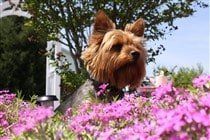
Exercise
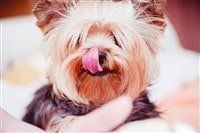
Dental Care
Tail Docking

The Popularity Factor
Yorkie Health
Barking
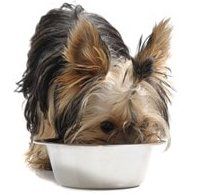
Feeding




